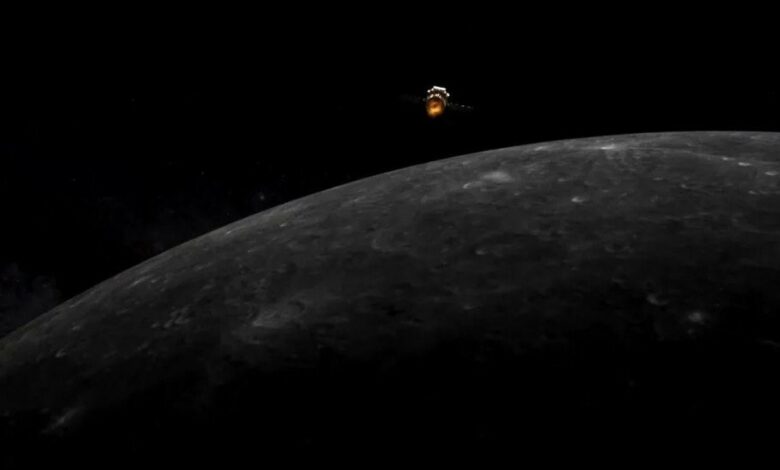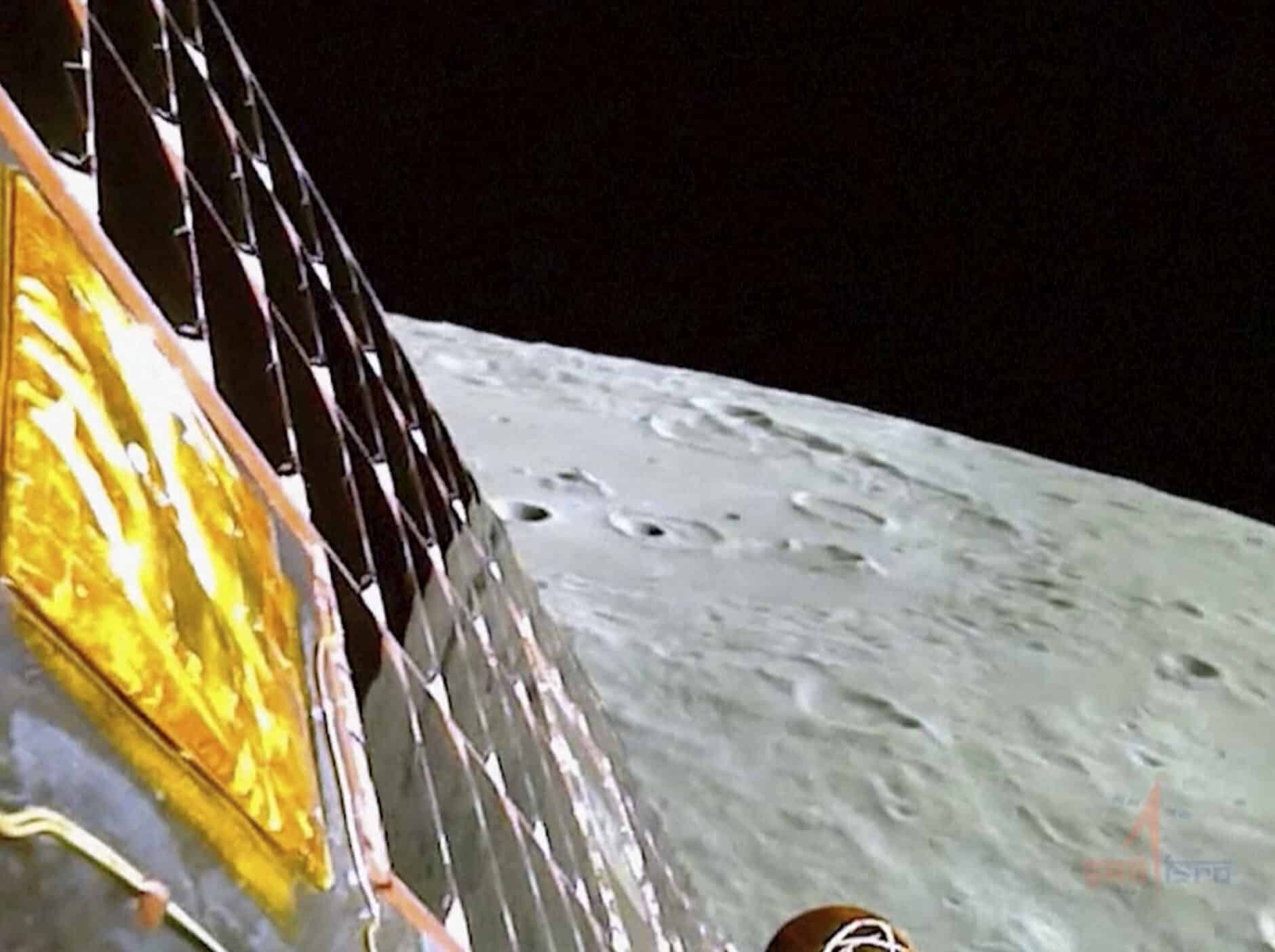India’s lunar rover goes down a ramp in 2023 to the moon’s surface and takes a walk

India’s lunar rover goes down a ramp to the moon’s surface and takes a walk
India achieved a significant scientific milestone as a lunar rover successfully descended from the lander of the country’s spacecraft near the moon’s south pole. This accomplishment was celebrated by Indian space officials and citizens alike.
The state-run Indian Space Research Organization (ISRO) characterized the event as “India took a walk on the moon.” The lunar rover, named Chandrayan-3 Rover, is slated to conduct various experiments over a period of 14 days, including analyzing the mineral composition of the lunar surface.
The successful landing of the rover elicited widespread jubilation across the nation. People gathered around televisions in offices, shops, and restaurants to witness the moment, and their excitement manifested in clapping, dancing, and sharing sweets. The landing was particularly significant as it targeted unexplored terrain that scientists believe might contain valuable reserves of frozen water.

The media captured the nation’s pride and excitement in their headlines. The Times of India proclaimed, “India Goes Where No Nation’s Gone Before,” underscoring the pioneering nature of the achievement. The Indian Express newspaper went even further, with the headline “The moon is Indian,” emphasizing the sense of ownership and accomplishment that the Indian population felt.
This achievement highlights India’s growing prowess in space exploration and technology, and it also signifies the country’s dedication to advancing scientific knowledge on a global stage. The successful moon mission has not only brought a sense of pride to the Indian people but also reinforces the country’s position in the international space community.
The successful lunar landing by India’s Chandrayan-3 Rover has elicited a sense of pride and accomplishment among citizens, particularly those who recognize the years of hard work put in by the country’s scientists.
Ajay Bhargava, a New Delhi-based architect, expressed that watching the landing broadcasts was an incredible experience and emphasized that the achievement was a result of the dedication and efforts of India’s scientific community over a prolonged period. He also stressed that political figures, including Prime Minister Narendra Modi, should not seek to take credit for this scientific success.
Indian Space Research Organization (ISRO) Chairman S. Somnath provided insights into the precision of the landing. He revealed that the lander touched down remarkably close to the center of the targeted landing area, which measured 4.5 kilometers (2.8 miles) in width. He further specified that the rover’s landing occurred within a mere 300 meters (985 feet) of the intended point. These precise calculations underscore the technological prowess and accuracy of India’s space program.
Notably, the Chandrayan-3 Rover wasn’t just stationary; it was operational and functioning effectively. Somnath highlighted that the rover was actively moving and performing its tasks “very well,” indicating that the mission was progressing as planned.
The sentiment expressed by Ajay Bhargava and the details shared by ISRO’s Chairman exemplify the widespread acknowledgment of the scientific community’s contributions and the importance of separating scientific achievements from political credit. This momentous achievement not only reinforces India’s stature in the global space exploration arena but also emphasizes the collaborative efforts of countless scientists and engineers who tirelessly work behind the scenes to achieve such feats.
S. Somnath, the Chairman of the Indian Space Research Organization (ISRO), provided insight into the scientific objectives of the Chandrayan-3 Rover and its associated lander. He mentioned that the rover is equipped with two scientific instruments, while the lander carries three instruments, all of which have been activated in a sequential manner.
These instruments are designed to conduct comprehensive studies of the moon’s characteristics. They will analyze the moon’s mineral composition, its atmospheric properties, and seismic activities on the lunar surface. Such data will contribute to a deeper understanding of the moon’s geology, composition, and behavior, which in turn could offer valuable insights into the moon’s history and evolution.
This successful lunar landing marks a significant achievement for India. Following a failed landing attempt in 2019, India now joins a select group of countries that have managed to successfully land a spacecraft on the moon. This list includes the United States, the Soviet Union, China, and now India.
The success of this mission highlights India’s growing capabilities in technology and space exploration. It aligns well with the image that Prime Minister Narendra Modi aims to project: that of a nation on the rise, establishing its presence among the world’s leading nations. This achievement underscores India’s potential as a major player in space exploration and technological advancement, and it reflects the dedication and expertise of the country’s scientists and engineers.
India’s Chandrayan-3 lunar mission began over a month ago, with an estimated cost of $75 million. S. Somnath, Chairman of ISRO, indicated that India’s next ambitious goal is to undertake a manned lunar mission, demonstrating the country’s increasing aspirations and capabilities in space exploration.
The focus on the moon’s South Pole region is of great significance due to the potential presence of frozen water in its permanently shadowed craters. This water could serve as a valuable resource for future astronaut missions, potentially supplying drinking water and even being used to produce rocket fuel.
India’s success in this lunar mission is notable, especially considering Russia’s recent setback. Russia’s Luna-25 spacecraft, which was also targeting the same lunar region, encountered issues and ended up in an uncontrolled orbit, resulting in a crash. This unfortunate outcome comes after a 47-year gap since Russia’s last successful lunar landing. The Roscosmos chief attributed the failure to the lack of expertise resulting from the prolonged hiatus in lunar research.
India’s consistent efforts in space exploration have yielded impressive results. With a history of satellite launches, including those for other countries, and the successful Mars Orbiter Mission in 2014, India has established itself as a notable player in the global space arena. The upcoming collaboration with the United States for a mission to the International Space Station further underscores India’s ambitions and international partnerships in space exploration.




